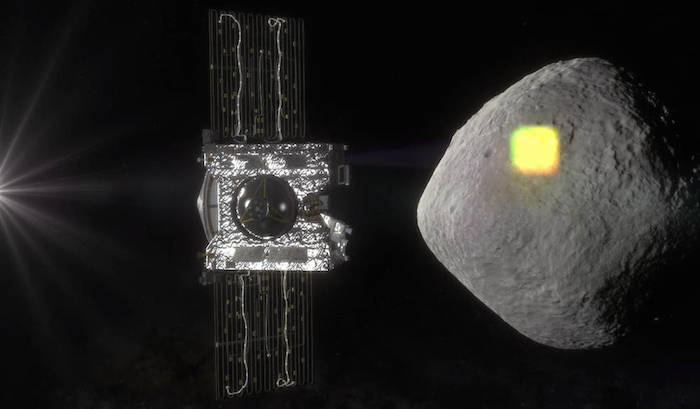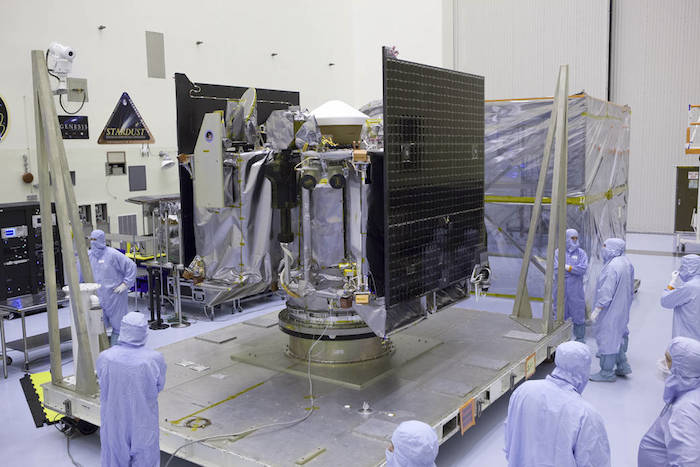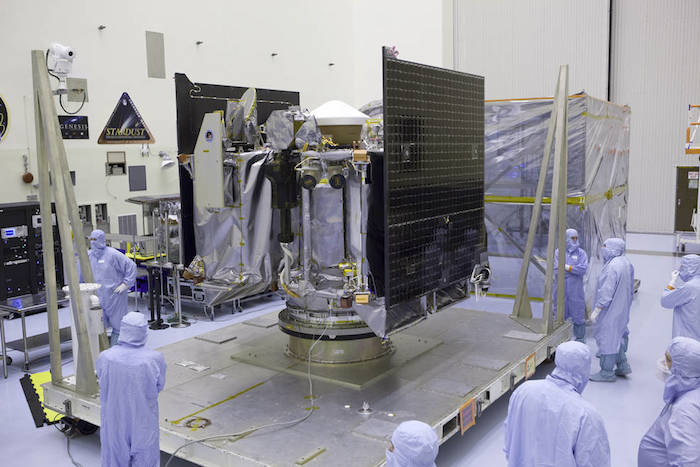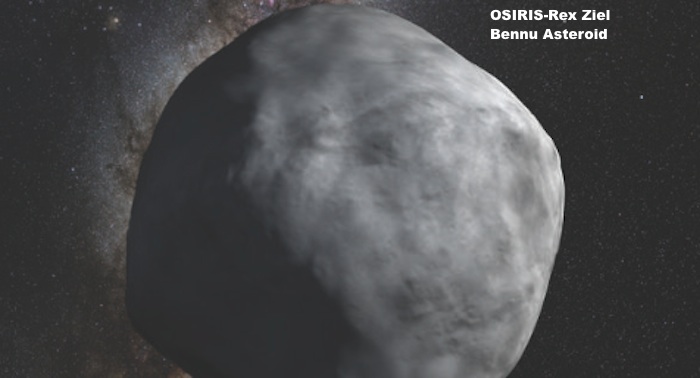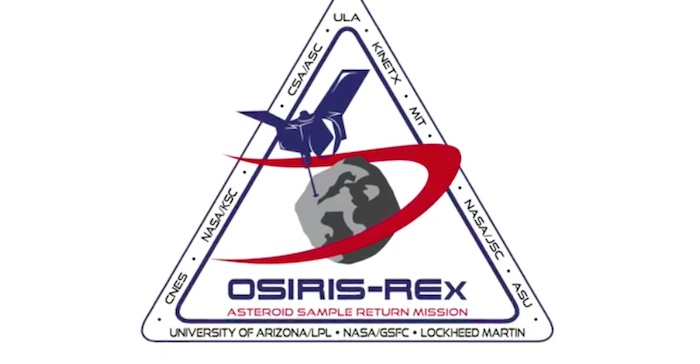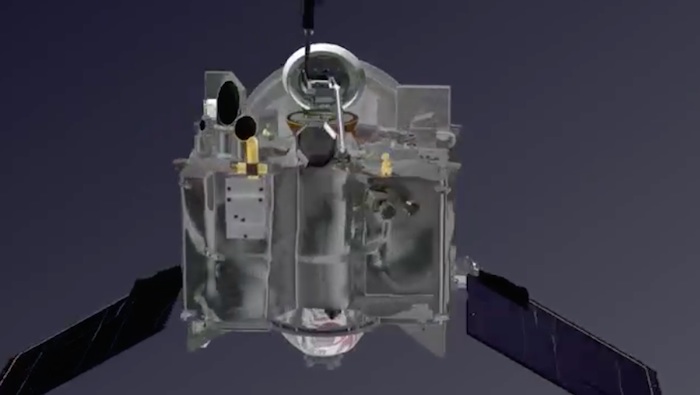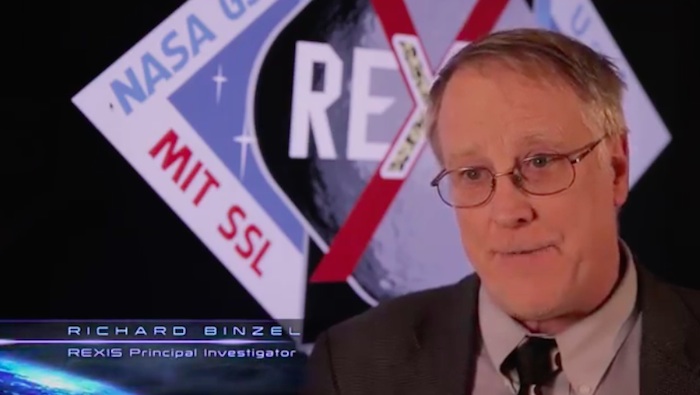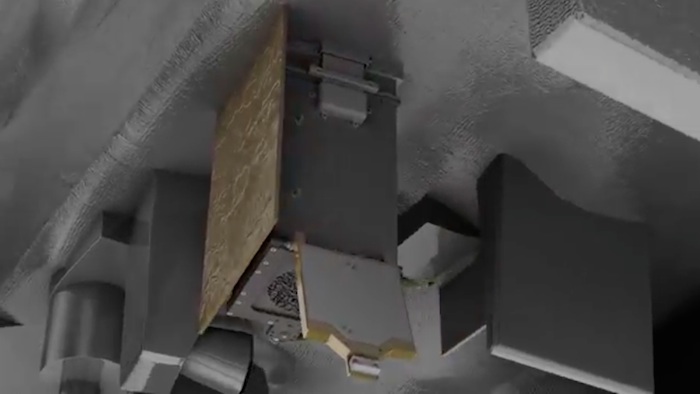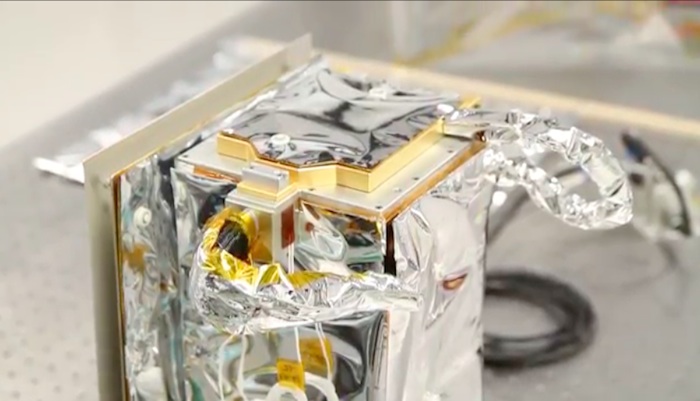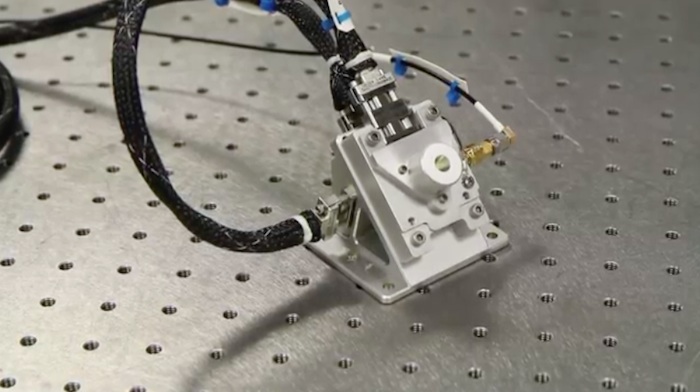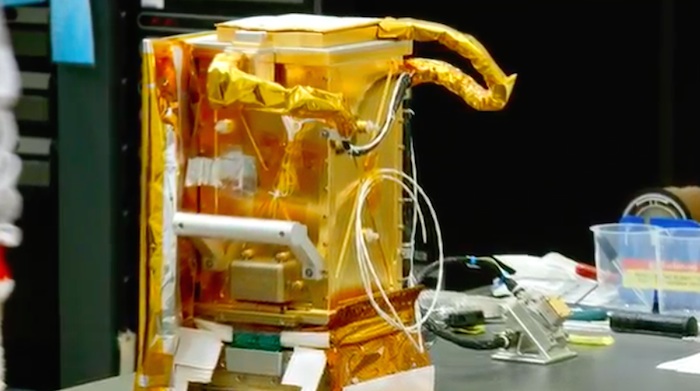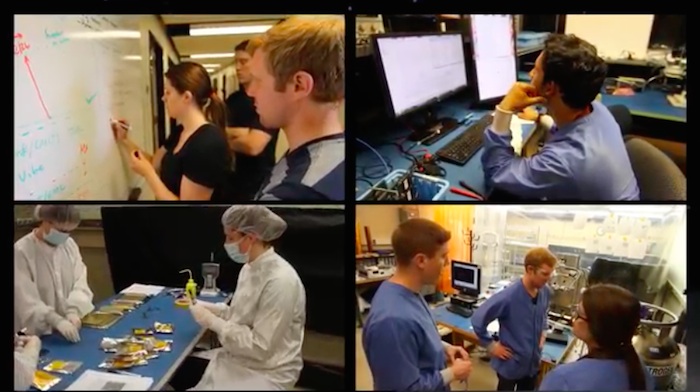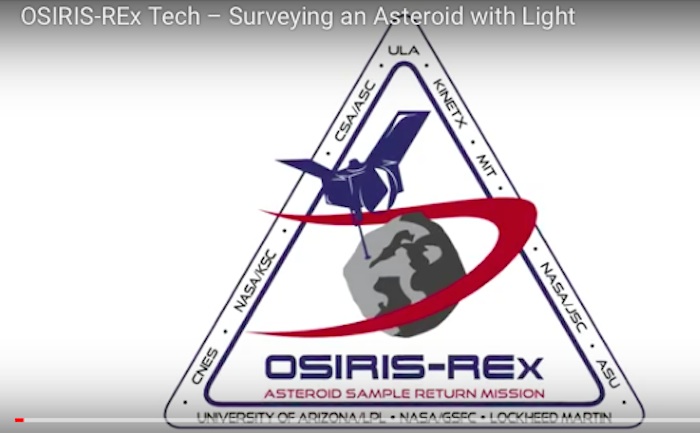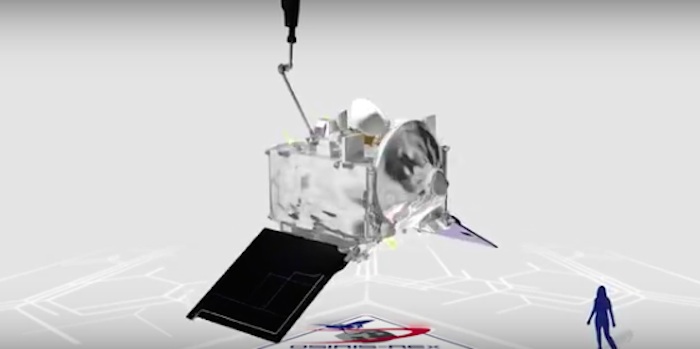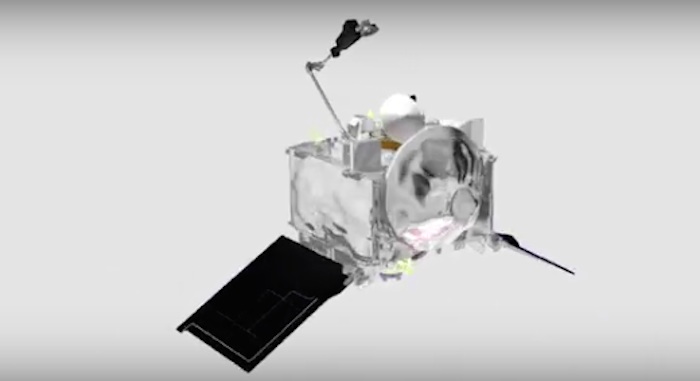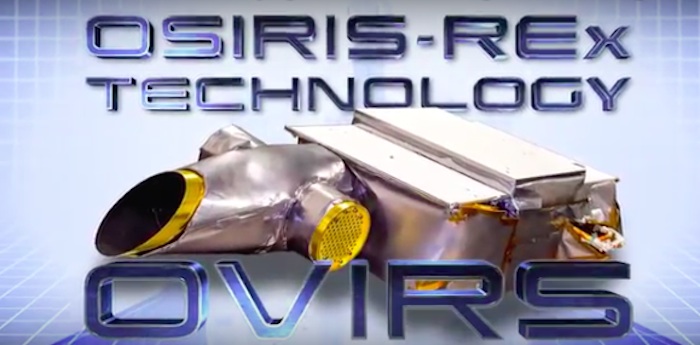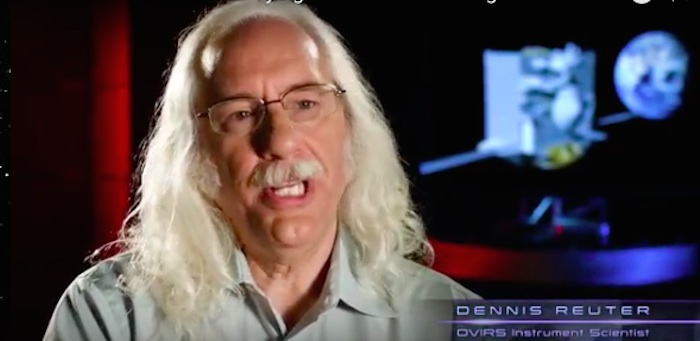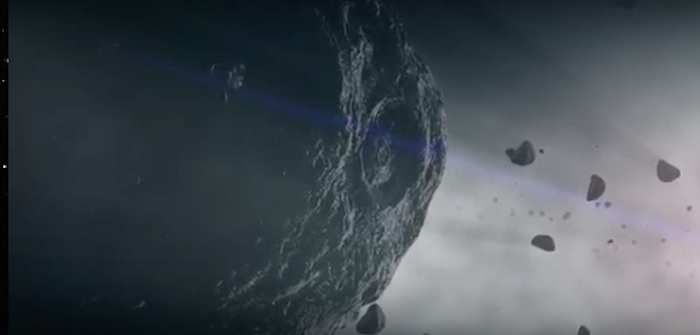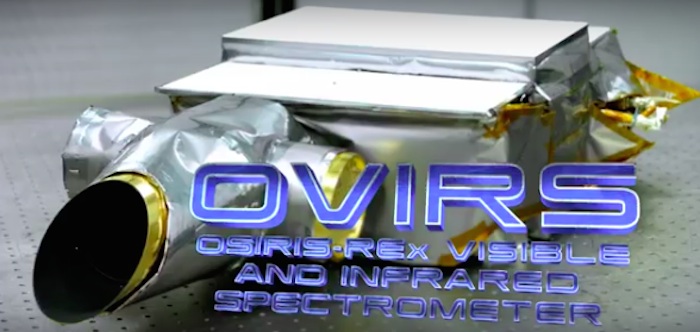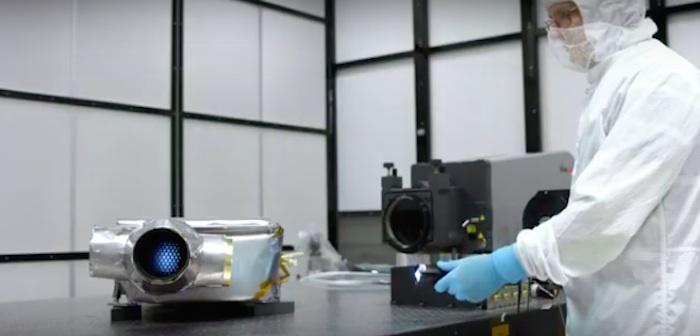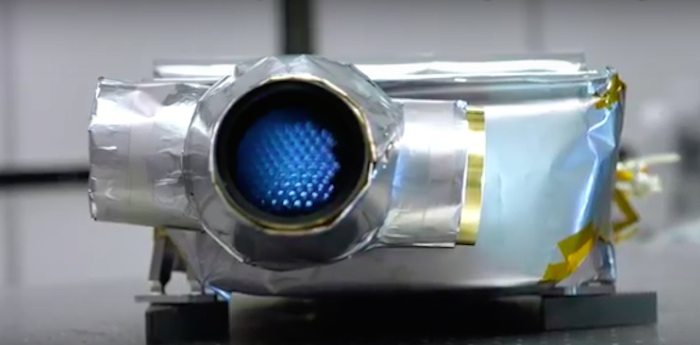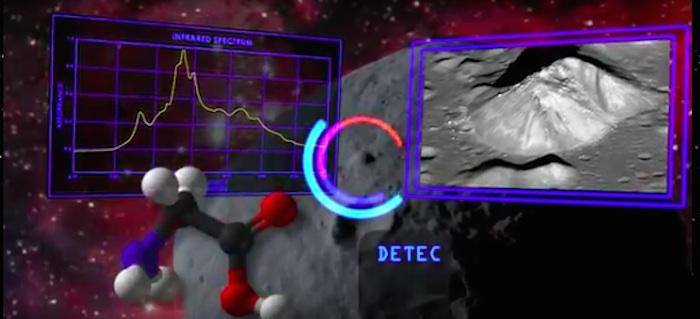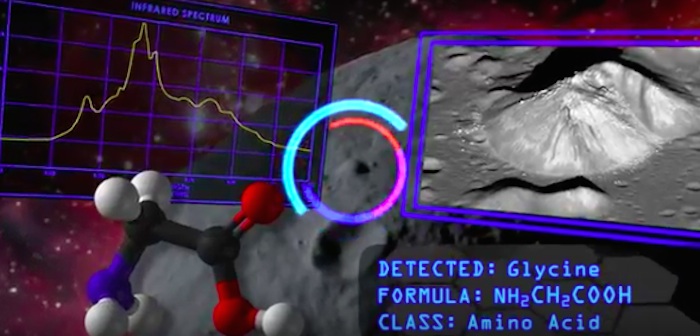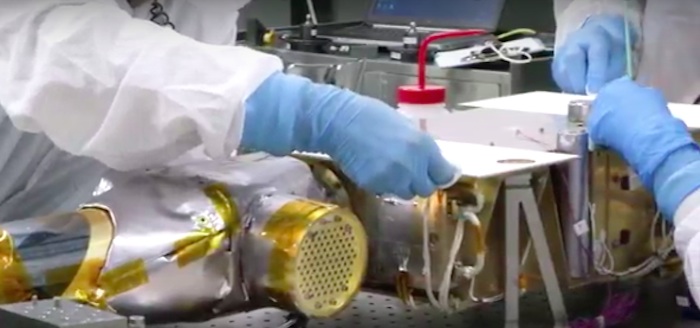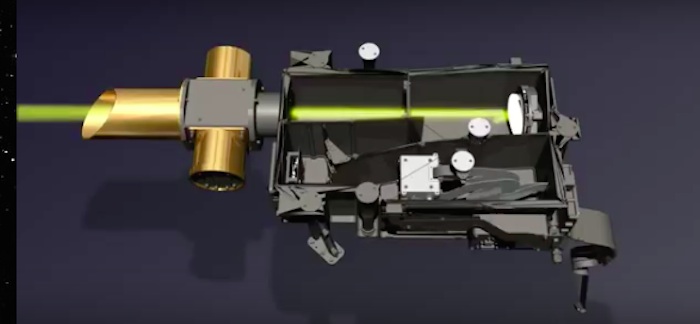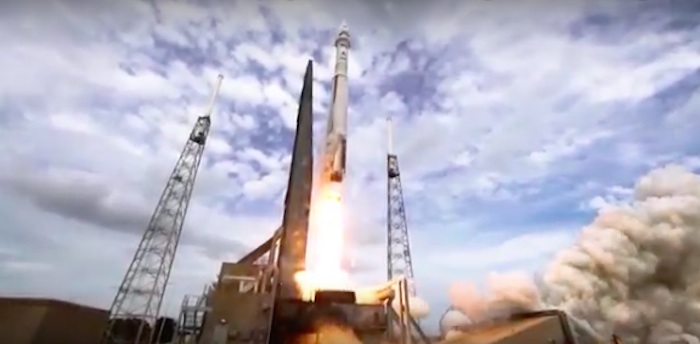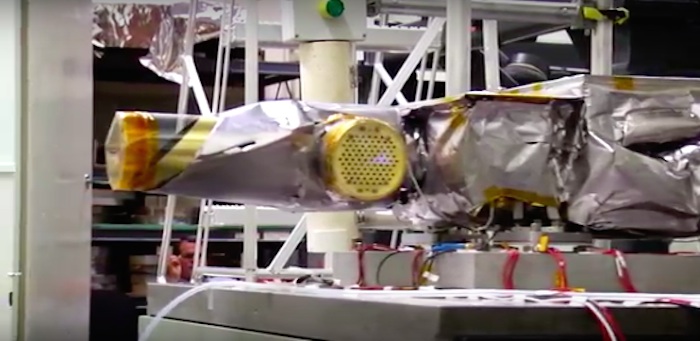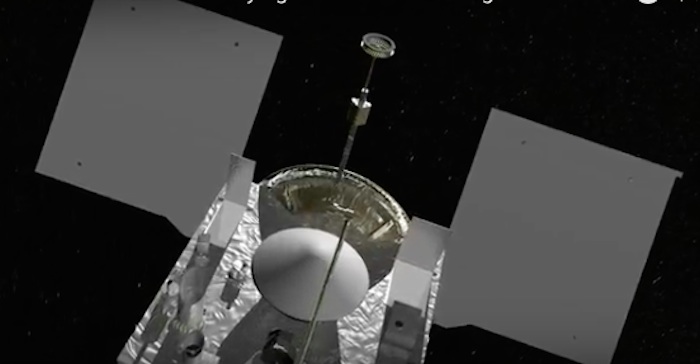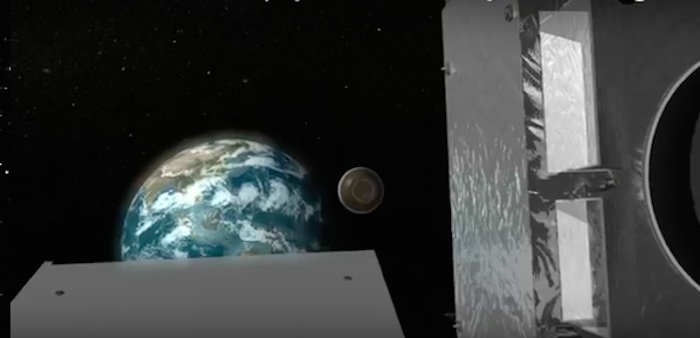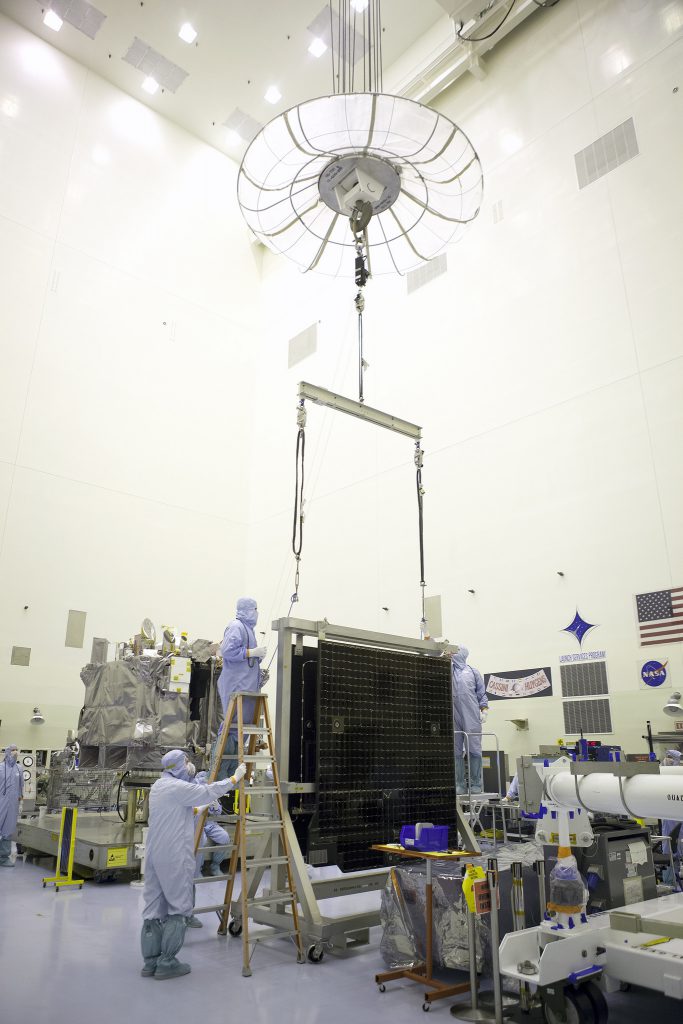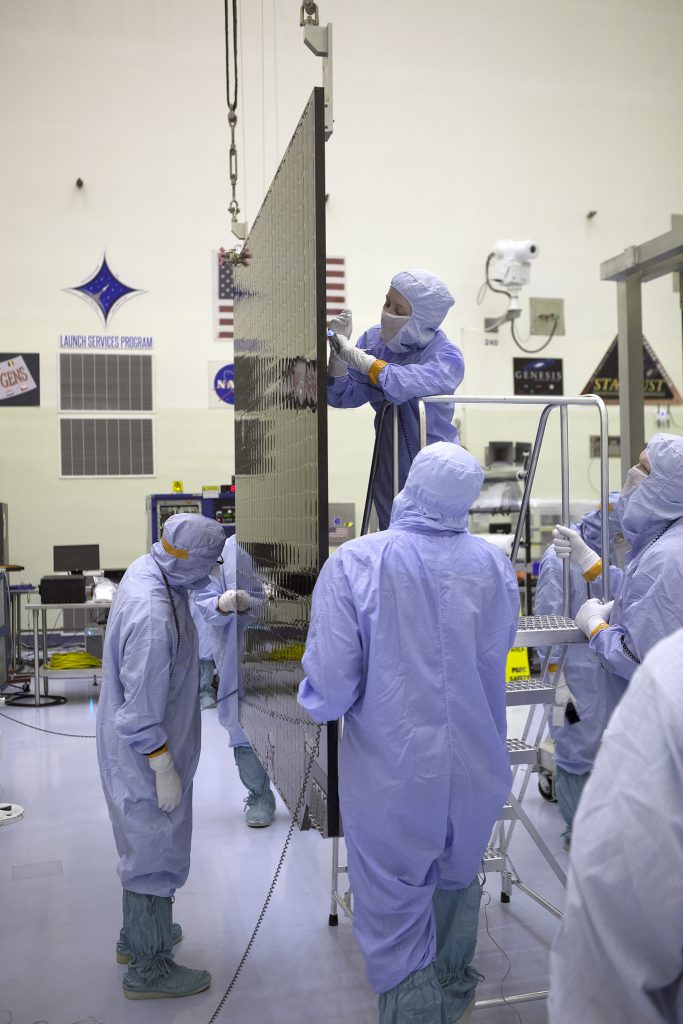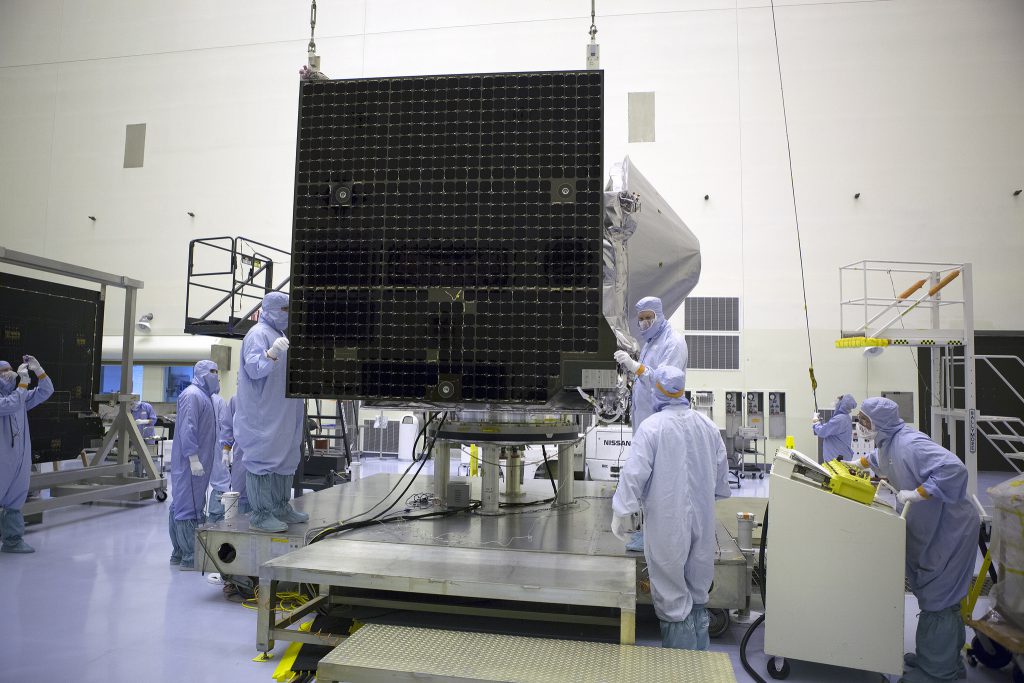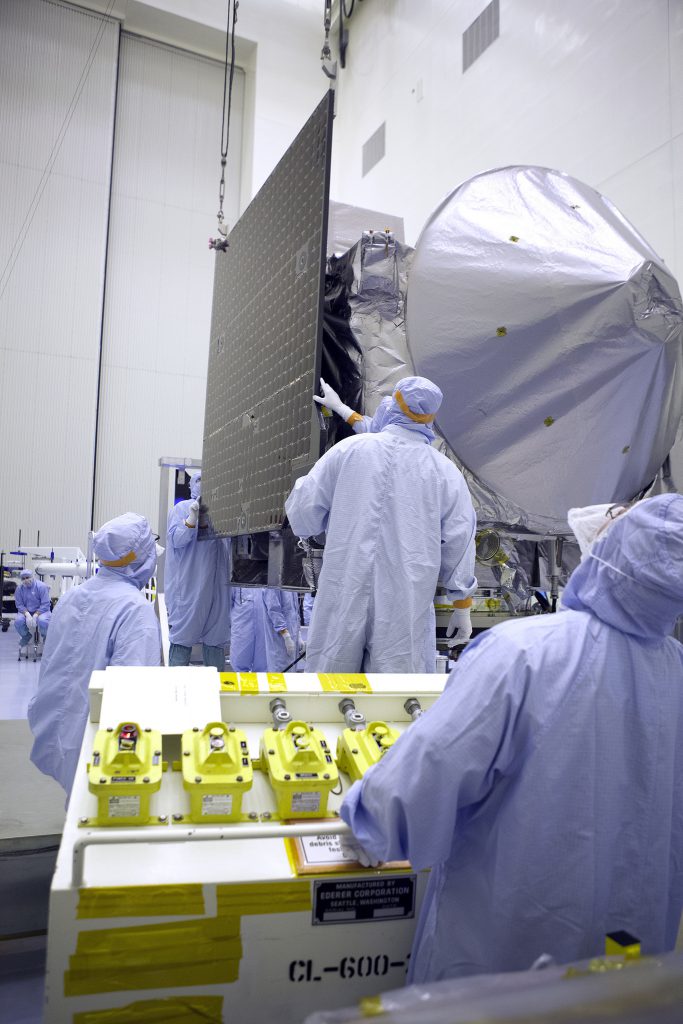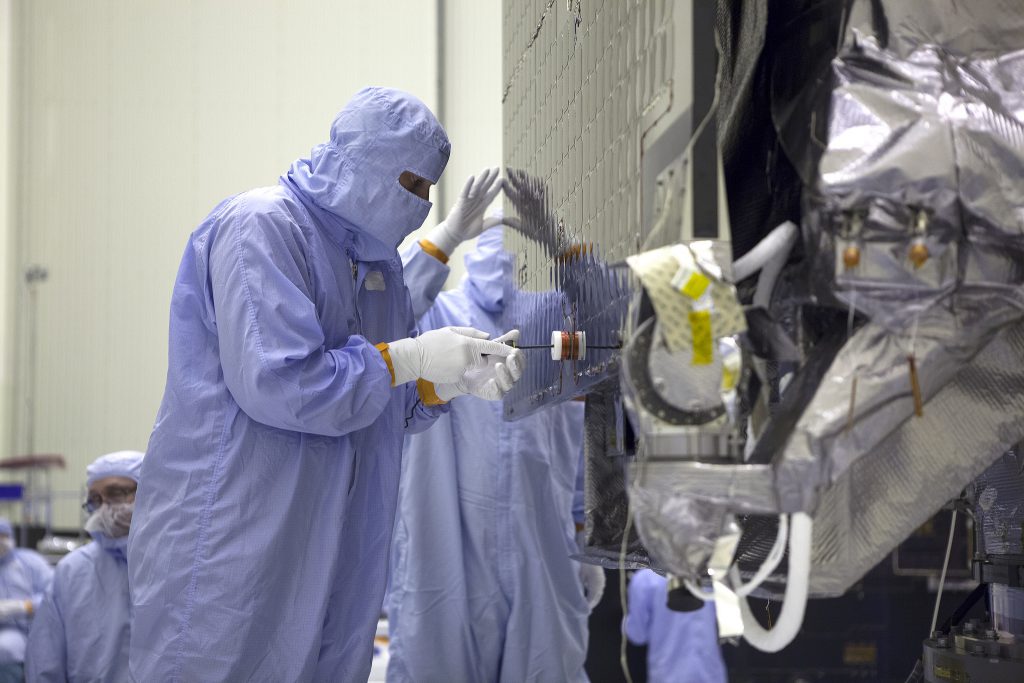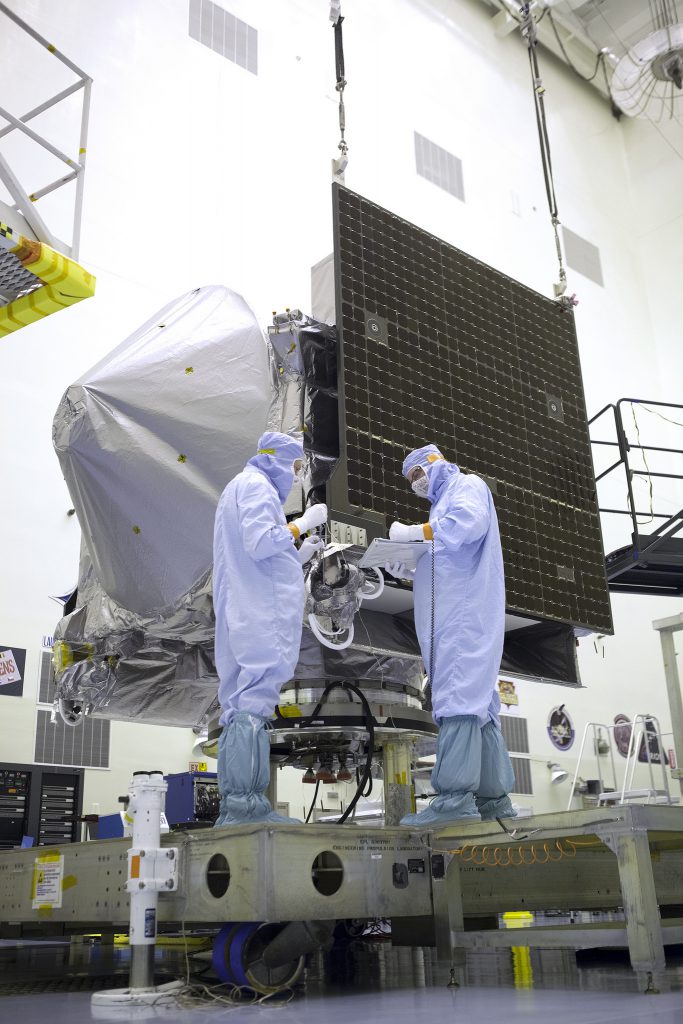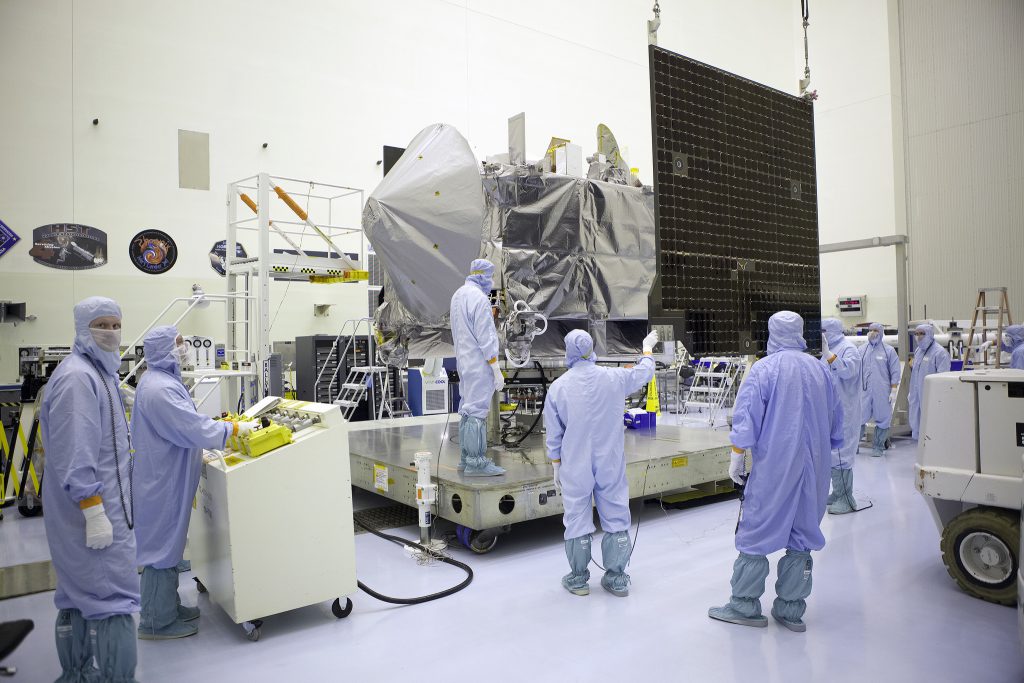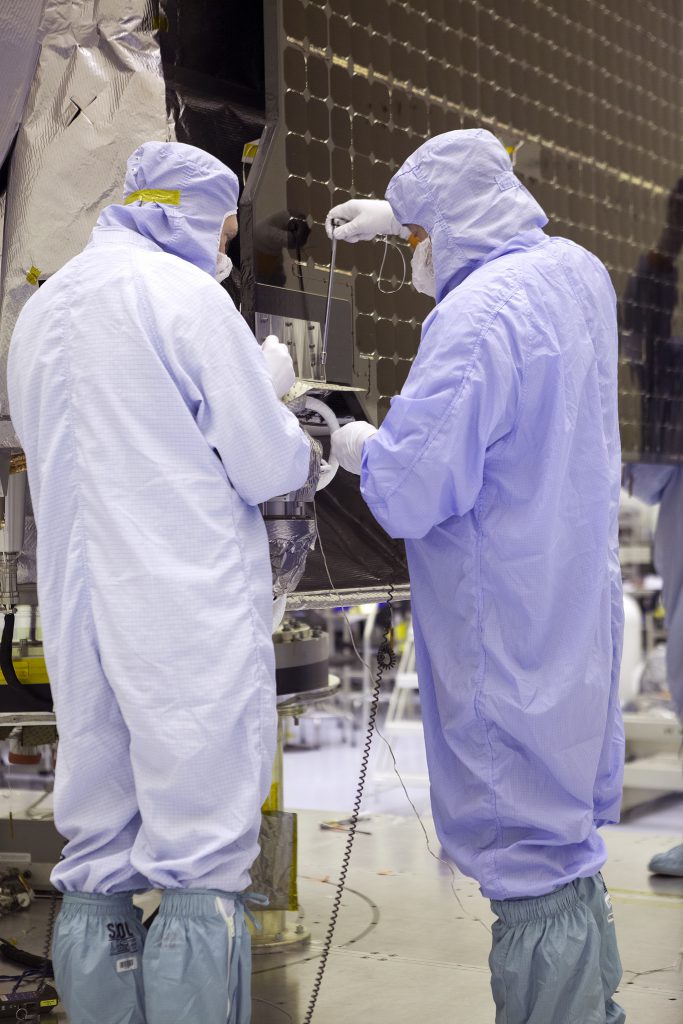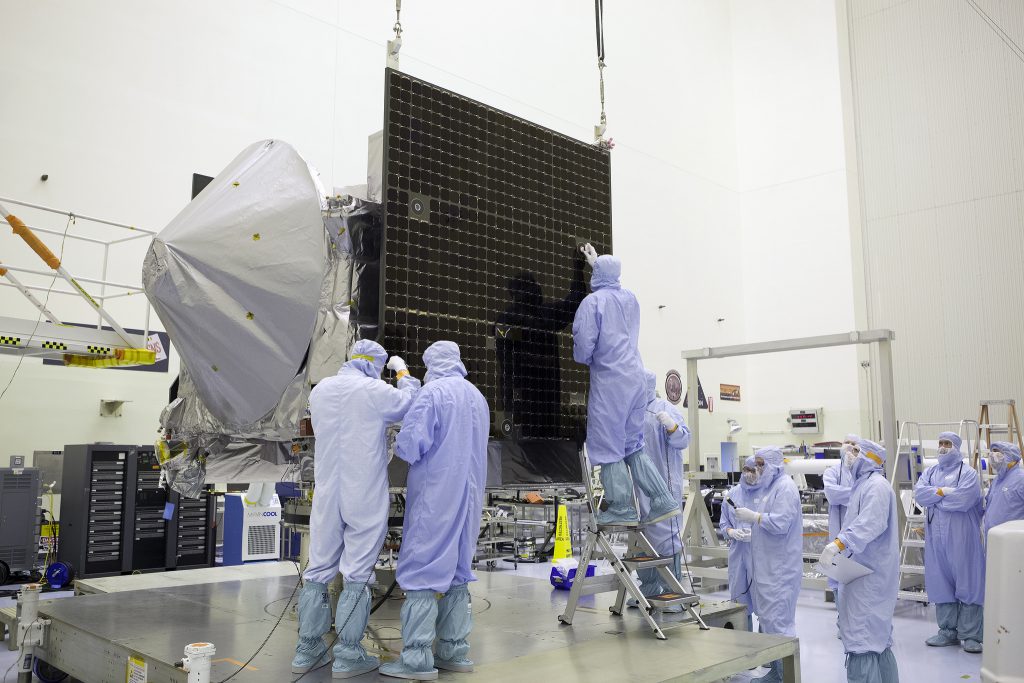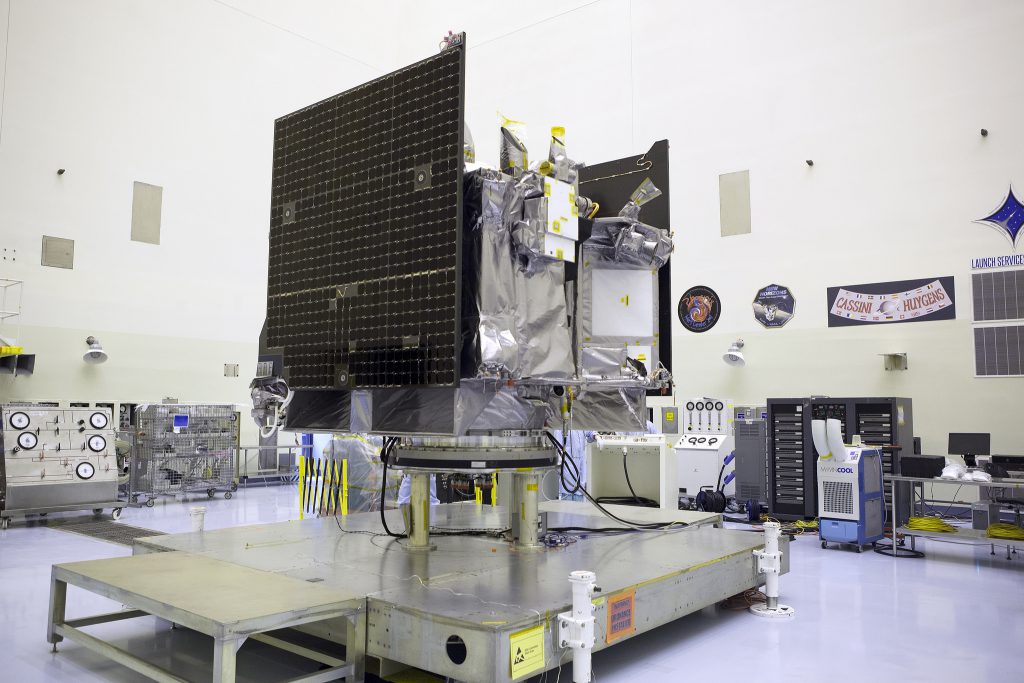HOW WAS BENNU CHOSEN?
The goal of the OSIRIS-REx mission is to collect a sample from an asteroid and bring it back to Earth. But just how did the OSIRIS-REx team choose Bennu from the over 500,000 known asteroids in the Solar System?
- Proximity to Earth
The closest asteroids to Earth are called Near-Earth Objects (NEOs). As the name suggests, NEOs are objects that orbit within 1.3 AU of the Sun. (1 AU = the distance between Earth and the Sun, or ~93 million miles) For a sample return mission like OSIRIS-REx, the most accessible asteroids for a spacecraft to reach are located between 1.6 AU and 0.8 AU. The ideal asteroid has an Earth-like orbit with low eccentricity and inclination. At the time of the mission’s asteroid selection in 2008, there were over 7,000 known NEOs, but only 192 had orbits that met these criteria. - -

- Size
Asteroids with small diameters rotate more rapidly than those with large diameters. With a diameter less than 200 meters, an asteroid spins so rapidly that the loose material on its surface (regolith) can be ejected from it. The ideal asteroid has a diameter larger than 200 m so that a spacecraft can safely come into contact with it and collect a sufficient regolith sample. This size requirement reduced the number of candidate asteroids from 192 to 26. - Composition
Asteroids are divided into different types based on their chemical composition. The most primitive asteroids are carbon-rich and have not significantly changed since they formed nearly 4 billion years ago. These asteroids contain organic molecules, volatiles, and amino acids that may have been the precursors to life on Earth. Of the 26 asteroids left on the list, only 12 had a known composition, and only 5 were primitive and carbon-rich.
From these 5 asteroids, Bennu was selected. Bennu is a B-type asteroid with a ~500 meter diameter. It completes an orbit around the Sun every 436.604 days (1.2 years) and every 6 years comes very close to Earth, within 0.002 AU. These close encounters give Bennu a high probability of impacting Earth in the late 22nd century. Bennu’s size, primitive composition, and potentially hazardous orbit make it one of the most fascinating and accessible NEOs … and the ideal OSIRIS-REx target asteroid.
---
Social media users are invited to apply for credentials to attend the targeted Sep. 8 launch of the OSIRIS-REx spacecraft aboard a United Launch Alliance (ULA) Atlas V rocket from Space Launch Complex 41 at Cape Canaveral Air Force Station in Florida. OSIRIS-REx is the first-ever NASA mission to travel to an asteroid, retrieve a sample, and return the sample to Earth.
If your passion is to communicate and engage the world via social media, then this is the event for you. Take the opportunity to be on the front line and share the excitement of the OSIRIS-REx launch with your followers on social media.
A maximum of 100 social media users will be selected to attend this two-day behind-the-scenes event on Sept. 7-8.
NASA Social participants will have the opportunity to:
- view a launch of ULA Atlas V rocket
- tour NASA facilities at Kennedy Space Center
- hear from OSIRIS-REx scientists about what they hope to learn from this first-ever asteroid sample return mission
- speak with representatives from NASA, ULA and Center for the Advancement of Science in Space.
- view and take photographs of the Atlas V rocket on the launch pad
- meet fellow space enthusiasts who are active on social media
- meet members of OSIRIS-REx, ULA and NASA's social media teams
Registration is now open on this page. For U.S. citizens active on social media, the deadline to apply is 1 p.m. EDT on Wednesday, Aug. 10, 2016. All social media accreditation applications will be considered on a case-by-case basis.
What is the OSIRIS-Rex mission?
OSIRIS-REx is going to Bennu, a carbon-rich, near-Earth asteroid that records the earliest history of our solar system. Scientists expect that Bennu may hold clues to the origin of the solar system and the source of water and organic molecules that may have made their way to Earth.
After its arrival at Bennu in 2018, OSIRIS-REx will survey the asteroid’s surface, pick out a sample spot, scoop up at least 60 grams (2.1 ounces) of the asteroid, and send this "pristine sample" back to Earth. The sample, enclosed in a sample return capsule, will land in the Utah desert in September 2023.
Do I need to have a social media account to register?
Yes. This event is designed for people who:
- actively use multiple social networking platforms and tools to disseminate information to a unique audience
- regularly produce new content that features multimedia elements
- have the potential to reach a large number of people using digital platforms
- reach a unique audience, separate and distinctive from traditional news media and/or NASA audiences
- have an established history of posting content on social media platforms
- have previous postings that are highly visible, respected and widely recognized
Users on all social networks are encouraged to use the hashtag #NASASocial, and #ToBennuAndBack. Updates and information about the event will be shared on Twitter via @NASASocial, @OSIRISREx and @NASAKennedy, and via posts to Facebook and Google+.
How do I register?
Registration is now open on this page. For U.S. citizens active on social media, the deadline to apply is 1 p.m. EDT on Wednesday, Aug. 10, 2016. Registration is for one person only and is non-transferable. Each individual wishing to attend must register separately. Each application will be evaluated on its merit and ability to meet the criteria as outlined above.
Can I register if I am not a U.S. citizen?
Social media credentialing for international guests for this NASA Social Media event is closed.
When will I know if I am selected?
After registrations have been received and processed, an email with confirmation information and additional instructions will be sent to those selected and those on the waitlist. We expect to send notifications no later than Aug. 26.
What are NASA Social media credentials?
Social media credentials give users a chance to apply for similar access as journalists in an effort to align the access and experience of social media representatives with those of traditional media. People who actively collect, report, analyze and disseminate news on social networking platforms are encouraged to apply for media credentials. Selection is not random. All social media accreditation applications will be considered on a case-by-case basis. Those chosen must prove through the registration process they meet specific engagement criteria.
If you do not make the registration list for this NASA Social, you still can attend the launch and participate in the conversation online. Find out about ways to experience a launch at http://www.nasa.gov/centers/kennedy/launchingrockets/viewing.html.
What are the registration requirements?
Registration indicates your intent to travel to NASA's Kennedy Space Center in Florida and attend the two-day event in person. You are responsible for your own expenses for travel, accommodation, food and other amenities.
Some events and participants scheduled to appear at the event are subject to change without notice. NASA is not responsible for loss or damage incurred as a result of attending. NASA, moreover, is not responsible for loss or damage incurred if the event is cancelled with limited or no notice. Please plan accordingly.
Kennedy is a government facility. Those who are selected will need to complete an additional registration step to receive clearance to enter the secure areas. IMPORTANT: To be admitted, you will need to provide two forms of unexpired government-issued identification; one must be a photo ID and match the name provided on the registration. Those without proper identification cannot be admitted. For a complete list of acceptable forms of ID, please visit: http://www.nasa.gov/sites/default/files/atoms/files/i-9_poster_acceptable_documents_2014_04_23.pdf
All registrants must be at least 18 years old.
To be admitted, you must provide two unexpired forms of government-issued identifications; one must be a photo ID and match the name you provided on the registration. For a complete list of acceptable forms of ID, please visit: http://www.nasa.gov/sites/default/files/atoms/files/i-9_poster_acceptable_documents_2014_04_23.pdf
KSC Badging Office does not accept driver’s licenses or identity cards from the following states:
- American Samoa
- Minnesota
As a caveat, Minnesota offers an Enhanced Driver’s License (EDL), which will be acceptable. EDLs are identifiable by the American Flag on the face of the card. You may find out more information about the REAL ID Act by going to: http://www.dhs.gov/real-id-public-faqs
What if the spacecraft's launch date changes?
A number of different factors can cause a scheduled launch date to change multiple times, with the launch window open from Sep. 8 until Oct. 12. The launch date will not be official until after the Flight Readiness Review. If the launch date changes prior to then, NASA may adjust the date of the NASA Social accordingly to coincide with the new target launch date. NASA will notify registrants of any changes by email.
If the launch is postponed on Sep. 8, attendees will be invited to attend a later launch date. NASA cannot accommodate attendees for delays beyond 72 hours.
NASA Social attendees are responsible for any additional costs they incur related to any launch delay. We strongly encourage participants to make travel arrangements that are refundable and/or flexible.
Does registration for and/or attendance at the NASA Social qualify me for media accreditation?
No, your registration and/or attendance does not qualify you for news media credentials at NASA's Kennedy Space Center, now or in the future.
What if I cannot come to the Kennedy Space Center?
If you cannot come to the Kennedy Space Center and attend in person, you should not register for the NASA Social. You can follow the conversation using the #NASASocial hashtag on Twitter. You can watch the launch on Sep. 8 on NASA-TV or nasa.gov. NASA will provide regular launch and mission updates on @NASA and @NASAKennedy.
Quelle: NASA
-
Update: 13.08.2016
.
Photos: Solar arrays attached to asteroid-bound OSIRIS-REx spacecraft
At NASA’s Kennedy Space Center, workers have finished the pre-launch assembly and fueling of OSIRIS-REx for the asteroid sample return spacecraft for liftoff Sept. 8.
The probe will launch atop a United Launch Alliance Atlas 5 rocket en route to Asteroid Bennu to capture a specimen for return to Earth.
Inside the Payload Hazardous Servicing Facility, the two power-producing solar arrays were attached to the spacecraft’s body on Aug. 2. Once deployed in space, the wings will measure 20.25 feet tip-to-tip to generate electricity to power the mission.
This week, the Atlas-Centaur launch vehicle was stacked in the nearby Vertical Integration Facility at Complex 41. And OSIRIS-REx was loaded with 2,700 pounds of propellant that will be used to maneuver the spacecraft into orbit around Bennu and boost the craft back to Earth.
Photo credit: NASA/Ben Smegelsky
Quelle:SN
-
Update: 19.08.2016
.
ALL SYSTEMS GO’ FOR OSIRIS-REX LAUNCH IN SEPTEMBER
Program managers from NASA’s OSIRIS-REx team provided a status update at a public briefing on the agency’s $800 million mission to launch a spacecraft to asteroid Bennu and return with samples in 2023. Dwayne Brown from NASA’s Office of Communications summarized the status by saying, “All systems are go for a launch on Sept. 8 in Florida.”
THE MISSION
The spacecraft, which travels under the hefty name of Origins Spectral Interpretation Resource Identification Security REgolith Explorer, will take a gradual approach to its target, a 4.5 billion-year-old, 1,640-foot (500-meter) asteroid, by swinging around the Sun and using the Earth for a gravitational assist in before arriving at its target in 2018.
image: http://www.spaceflightinsider.com/wp-content/uploads/2016/07/OSIRIS-REx-spacecraft-655x360.jpg

Image Credit: NASA
Once in orbit, the spacecraft will use multiple instruments to study the chemical composition of the asteroid’s surface in the visible, infrared, and X-ray spectral bands for up to two years. Bennu, a carbon-rich asteroid, is expected to include organic material in its makeup that could have had a role in the origins of life on Earth.
According to the mission’s principal investigator, Dante Lauretta from the University of Arizona-Tucson, the samples can help solve the puzzle of “how we are here, why we are here, and how likely it is that this kind of process – the origin and evolution of life – may have happened elsewhere in the Solar System and even throughout the galaxy.”
Bennu is also interesting from a practical point of view. While NASA will be investigating how it formed, companies such as Deep Space Industries and Planetary Resources, which are hoping to mine asteroids, will be interested in learning how well OSIRIS-REx performs proximity operations near the asteroid as well as what there that’s worth mining.
On the “Security” side of the mission, OSIRIS-REx will be studying something called the Yarkovsky effect, where heat from the Sun is radiated into space as the asteroid rotates, acting as a thruster. This effect, if detected, could help better identify how asteroids travel along their orbits, making them easier to detect and track. The “thruster” effect could also be useful should we ever need to change a potentially hazardous asteroid’s orbit.
“The science team took into account three criteria when making that selection: accessibility of the asteroid, size of the asteroid, and composition,” said Christina Richey, NASA’s Deputy Program Scientists, explaining why Bennu was chosen as the mission’s destination.
In the case of accessibility, the target asteroid had to be reached, sampled, and returned from within a few years’ time. In terms of size, the target had to be compatible with operations near the asteroid (orbit) and on it (sampling). Smaller asteroids – less than 656 feet or 200 meters in diameter – spin too quickly for useful operations. Regarding composition, the goal was to find a carbon-rich asteroid from the Solar System’s early formation. Bennu fit all of these categories.
PICKING UP SOME DUST

An artist’s rendering of the OSIRIS-REx spacecraft at Bennu on approach to pick up samples. Image Credit: Lockheed Martin
Because Bennu’s gravity is much smaller than a planet’s, OSIRIS-REx will be able to do something most NASA orbiters can’t: capture surface samples. Lauretta explained, “We’re seeking samples that date back to the very origin of our solar system.”
Once the orbital survey has been completed around 2020 and scientists have selected the ideal site, the spacecraft will match Bennu’s rate of spin and drop toward the surface at a leisurely quarter mile per hour (10 centimeters per second) before reaching out to touch the surface with something called the Touch-and-Go Sample Acquisition Mechanism or TAGSAM.
TAGSAM is an articulated 11-foot (3.4-meter) pole with a sampling device at the end. When OSIRIS-REx gets close to the surface, the TAGSAM arm will extend, gently touch (“high five”) the surface with a 12-inch (30-centimeter) diameter sample head, and blast the surface with pure nitrogen gas. This will kick up regolith and dust from the surface into the collector. The sample is then brought back aboard the spacecraft.
The minimum sample size for the mission is expected to be around 2 ounces (60 grams), although in testing the sampler typically picked up 5–10 ounces (150–300 grams) of material. The Sample Return Capsule itself can handle up to 4.4 pounds (2 kilograms) of material.
The entire “touch and go” operation will last only about five seconds. After collecting its sample, OSIRIS-REx will go back to orbiting the asteroid. When the time is right, the spacecraft will fire its main engine for its return to Earth. In response to a Spaceflight Insider question, NASA explained that OSIRIS-REx uses a blow-down hydrazine monopropellant propulsion system to maneuver, with its thrusters generating from 0.04 to 45 pounds (0.2 to 200 newtons) of force .
OSIRIS-REx will leave Bennu orbit sometime between March 2021 and April 2022 and return to Earth around Sept. 24, 2023. Once the Sample Return Capsule is jettisoned, the spacecraft will be directed into an orbit around the Sun. The capsule will re-enter the Earth’s atmosphere and land via atmospheric and parachute braking at the Utah Test and Training Range. Samples will then be brought to Johnson Space Center for curation and study.
Part of the samples collected (4 percent) will go to Canada due to their role creating the OSIRIS-REx Laser Altimeter (OLA) instrument. Another half a percent of the sample will


